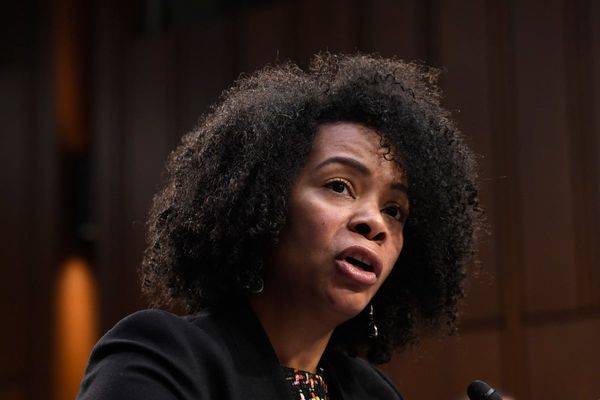
The United States wants to include China in negotiations on nuclear weapons with the Russian Federation. Russia’s reaction to this policy depends in part on its own understanding of Beijing’s nuclear intentions and capabilities. The question of just what Russia knows—or believes—about China is a tough one. Fortunately, an extraordinary collection of newly declassified documents from the Russian archives, including the party records known as The Russian State Archive of Contemporary History (RGANI), reveals how the Soviet Union studied China’s nuclear and missile programs during the height of the Cold War—at a time when nuclear war between Moscow and Beijing was very possible.
The Soviet Union adopted an exceptionally broad view of what types of information were useful, and Soviet assets were highly successful in obtaining various types of evidence not only from China but around the world. Soviet analysts often recognized the limitations of their sources, but they, like their American counterparts, often overestimated Chinese advances during the Cultural Revolution era. The evidence shows just how hard it was for even a state like the Soviet Union to conduct nuclear intelligence effectively.
The Soviets had one significant advantage over the United States in terms of intelligence on China’s nuclear weapons program: Moscow had participated in the early days of Beijing’s nuclear industry. In 1968, Soviet Premier Alexei Kosygin requested that the Ministry of Geology provide a report on uranium resources in the People’s Republic of China (PRC) . That report noted that Soviet specialists had participated in seeking uranium deposits in China between 1955 and 1960. During that time, 30 percent of all possible areas had been inspected which revealed 15 areas with uranium ore—allowing rough forecasts of how much more China might have access to.
But the past ties could be a disadvantage, too. In the 1950s, the Soviets helped train Chinese spymasters, and Moscow allegedly removed most of its own spies during the 1950s. Those conditions created special difficulties for recruiting agents in the PRC. Especially after the March 1969 crisis on the Sino-Soviet border, the top-secret in-house journal of the KGB ran multiple articles on how to convince Chinese citizens to provide intelligence to Moscow.
The journal did not specifically discuss how to gain information on the Chinese bomb—although one article on counterintelligence warned about Chinese interest in Soviet nuclear weapons and referred to a Chinese diplomat that bought a book on rockets. Yet the articles are revealing about the Soviet approach, and one article that summarized best practices suggests that they at least occasionally applied crude approaches. The author resorted to culturally essentialist views of Chinese people, suggesting that KGB operatives remember that Chinese characteristics included nationalism, “mystical belief in the vozhd’ (an archaic Russian term for top leader also used for Stalin), “brutality and vengefulness,” “cleverness and shiftiness,” “lack of inclination to rapidly solve any problem,” “a developed sense of envy,” “ability to endure hardship,” “tendency for exaggeration,” preoccupation with maintaining “face,” and others. The article also warned about the tendency among “some” skeptical KGB operatives to believe Chinese were too dishonest and untrustworthy to be good agents.
Another source of intelligence for the Soviet Union were signals, atmospheric changes, and satellite observations. The Soviets paid close attention to signals intelligence from Chinese weather observation posts to determine whether a nuclear test was imminent. For example, in September 1967, the Soviets intercepted directives to two weather stations in Xinjiang to strengthen observation of meteorological conditions. Throughout the 1969 crisis, the GRU, Russia’s military intelligence agency, repeatedly reported on the operation of meteorological posts in Xinjiang as the strongest possible evidence that could predict an upcoming test. The Soviets were also able to detect when the Chinese tracked bomber aircrafts or transmitted data on air radioactivity samples.
Satellite intelligence also played a role. On Oct. 24, 1966, for instance, space assets allowed the Soviets to discover a rocket with a height of 23 meters, which led the GRU to conclude that the first batch of Dongfeng rockets “might have already been produced.” In August 1967, space intelligence found another rocket with a height of 30-35 meters and a diameter of 3 meters, which the GRU believed might be a rocket with a range over 2,000 kilometers.
The Soviets, however, were dissatisfied with their ability to gain intelligence on China’s nuclear explosions. In July 1968, Ivan Serbin, head of the Defense Industry Department of the Central Committee, complained in a top-secret report that “currently, the effectiveness of discovering nuclear explosions still remains low, and information about them comes with great delay.” Serbin noted that, although in 1967 a special “Horizon” facility was established in the Mongolian People’s Republic, that installation “was not able to register an air nuclear explosion conducted in China in December 1967, while stations that were located significantly further away from the place of the explosion discovered [it].”
But technical information was not the only means. Due to the chaos of the Cultural Revolution, the Soviets were also able to pick up on key details about the military-industrial complex through the so-called big character posters (wall-mounted posters used to express a political view) and Red Guard materials. For example, one such poster allowed the Soviets to learn that a high-ranking scientist in the Seventh Ministry of Machine Building, which ran the missile programs, had been killed during factional violence. Another set of materials allowed the Soviets to learn that the same ministry was undergoing a “purge of the leadership.”
Defectors also played an important role. Wang Ming, a former high-ranking Chinese Communist Party leader who had defected to Moscow after losing a power struggle with Mao, regularly provided analysis to the Soviets, including on the bomb. In May 1966, Wang told his interlocutors: “Mao wants to show the USA that an explosion of nuclear weapons above all aims to hit a blow to the Soviet Union, show the USA that it, like before, will consistently pursue the anti-Soviet line…”
All this intelligence, however, needed to be processed. Especially after the beginning of the Cultural Revolution, Soviet leaders were clearly perplexed by China’s behavior. In September 1966, the Politburo established a secret Institute on the Problems of Modern China, as part of the Academy of Sciences, with 200 individuals. The Ministry of Foreign Affairs and the KGB were told to give classified information to the institution. Both scholars and former policymakers participated.
Soviet academics sometimes provided very interesting insights. In December 1969, the Director of the Institute of the USA at the Academy of Sciences, Georgi Arbatov, displayed a sensitivity to the pressures of a strategic nuclear triangle. In a secret report, he wrote that “due to the geographical position, the threat of China to the USA requires fewer expenses that it does from us. Basically, the Americans maintain one dual purpose group of strategic forces—both against the USSR and against China. When it comes to us, however, this threat forces us to have two separate groups of the armed forces—in the West and in the East.”
At other times, however, the work produced by Soviet academics was poor. For example, a top-secret report on China’s military-industrial complex, written by the Director of the Institute of Far Eastern Studies in May 1971, relied upon sources such as the Hong Kong Standard, TASS, and Electronic News —and contained multiple errors.
Yet Soviet diplomats and intelligence officers paid extremely close attention to the views of foreign scholars, particularly American ones. Professor Robert Barnett told the first secretary of the Soviet Embassy that, “The USSR and USA should consider in their plans on defense from nuclear attack the development of nuclear weapon delivery vehicles by China.”
K. Kelin, who worked at the U.N. Secretariat, reported on a conversation with Walter Clemens during a meeting of the Association for Asia and Far East Studies. Clemens told Kelin that the Chinese program was surprisingly fast, that scientists and engineers had been protected despite the Cultural Revolution, and that the thermonuclear explosion was “unexpected” for the United States.
Igor Rogachev, the first secretary of the Soviet embassy in Washington, met with Angus M. Fraser of the Institute for Defense Analyses, and Vladimir Petrov of George Washington University. Fraser claimed that anti-Soviet propaganda in Beijing had become “more serious and concrete” with a “military-strategic character.” In the margins of the Rogachev report, there is a handwritten remark: “This is already not the first statement. The Americans are strenuously throwing us against each other militarily.” Fraser then hinted that China might be considering the deployment of medium-range rockets in Albania.
Think tank reports also caught the GRU’s attention. The head of the GRU himself, Petr Ivashutin, not only submitted to the Central Committee a translated copy of the Research Analysis Corporation’s “Communist China’s Military Doctrines” report, but also included his own introductory remarks. Ivashutin wrote that the PRC most feared a sudden strategic attack with nuclear weapons, but “[a]ccording to the theory of the Maoists, the decisive significance in war is played by a person well prepared politically, not weapons (including atomic).”
The Soviets also closely followed the views of American policymakers on China’s nuclear weapons. Discussions with the Americans helped the Soviets better understand Washington’s views of the strategic nuclear triangle. In September 1967, Ambassador Llewellyn Thompson told Soviet Foreign Minister Andrei Gromyko that the United States’ ABM system “will serve the purpose of protection from a possible Chinese attack” and would not provide protection “from the large scale strategic rocket attack the Soviet Union is capable of launching.”
The Soviets looked to foreign sources to help understand the effect of their implicit nuclear threats against China during the 1969 crisis. In October 1969, the GRU reported that among “Western military circles […] an opinion is voiced” that “the PRC settled for talks under the influence of the well-known warnings of the Soviet Union….” In December, the third secretary of the USSR’s Mission to the U.N. reported that “[t]he real reasons that forced the PRC to agree to the talks with the USSR, according to the USA, do not lie in China’s strength, rather in its weakness.” That same month, another GRU report claimed that “American military specialists” believed Chinese nuclear forces “do not considerably influence China’s military-political and military-strategic standing and the situation in the world in general.”
Although we still do not have enough evidence to make sweeping generalizations, the expansive use of a variety of sources was likely the result of at least two factors. First, the Soviets believed that the Chinese government was deeply irrational, and Moscow had trouble comprehending Beijing’s “bizarre” behavior, especially during the Cultural Revolution. Second, the deterioration of relations placed Soviet diplomats and spies in Beijing in a very difficult situation. The KGB resident in Beijing, Iurii Drozdov, wrote in his memoirs that, “Several times our officers were subjected to attacks by Red Guards,” and the Soviet embassy itself was assaulted. Despite geographical proximity, a previously close relationship, and similar Leninist systems, the Soviets struggled to comprehend the Chinese bomb.
Although these initial findings are preliminary, the new documents do unambiguously demonstrate the difficulty even for superpowers to understand nuclear intentions. Washington should remember that Moscow today is similarly looking at a mix of complicated evidence and deeply interested in the views of third parties. Clear answers are hard to find, but understanding Russia’s analysis of China’s nuclear weapons will be crucial for achieving cooperation among the great powers.







